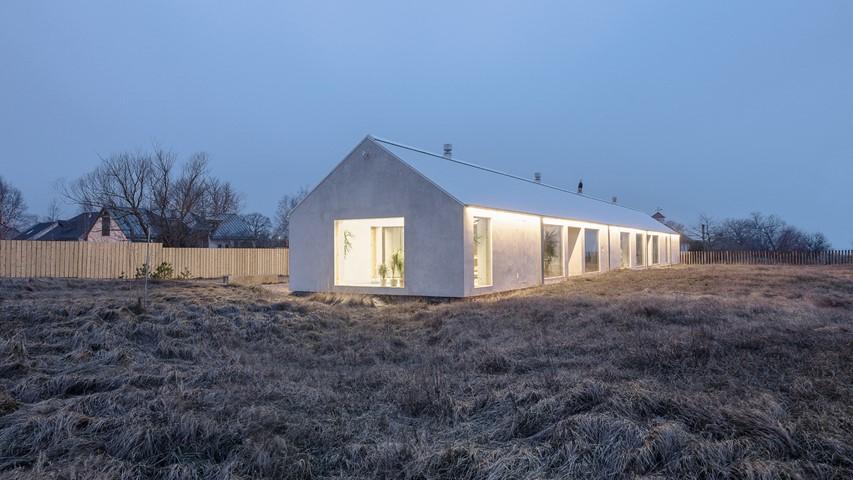
It's our responsibility to learn to co-exist with nature.
The Salt House by Brigita Bula arhitekti was shared through our website by the New European Bauhaus Friendship Group.
It is located on the edge of the Pāvilosta historical centre, a small seaside town in Latvia.
The house incorporates sustainability, aesthetics & inclusiveness and brings innovative, nature-friendly architecture to a rural area.
Beautiful
What makes it special is that the architect has considered tradition, climate, landscape, ecology of materials & processes, abilities of local craftsmen and builders, new technological requirements, and client needs to deliver a visually appealing, internationally renowned result.
The house reminisces a sand dune that catches all the salt carried by the sea breeze. It will retain its beauty as it ages – cracks or leaks of rust will fit its image because this is simply the natural order of things.
Sustainable
This 240m2, one-storey building is set in a seaside meadow as a simple, narrow, elongated volume that draws a thin sea-wave-like line in the surrounding undulating landscape, leaving as small an imprint in the existing biotope as possible.
Pāvilosta has a temperate climate & strong wind, so the building was constructed with thick, monolithic, lime-plastered blocks - a material sourced locally. The cross-section of the one-story structure was inspired by traditional fishermen's houses prevalent in the area. The heating system uses only local renewable sources - a combination of a heat pump & a wood heating system.
Together
Extensive planning effort was made to also have a positive social impact. Ensuring that local workers could be involved in the construction to support the local community & provide economic opportunities in a remote area with low average incomes was a priority for the project.
The Salt House has received the Latvian Architecture Annual Award. The jury emphasized the simplicity of the building, the successful use of materials & the harmony with the landscape. It is also nominated for the EU Prize for Contemporary Architecture, Mies van der Rohe.
? The Salt House © R. Hofmanis
Details
- Publication date
- 20 June 2021
